This article needs additional citations for verification .(May 2013) |


Flags at Buckingham Palace vary according to the movements of court and tradition. The King's Flag Sergeant is responsible for all flags flown from the palace.
This article needs additional citations for verification .(May 2013) |


Flags at Buckingham Palace vary according to the movements of court and tradition. The King's Flag Sergeant is responsible for all flags flown from the palace.
Until 1997 the only flag to fly from Buckingham Palace was the Royal Standard, the official flag of the reigning British sovereign, and only when the sovereign was in residence at the palace.
Even in times of mourning, the Royal Standard would not fly at half mast ("The king is dead, long live the king!"). However, it flew at half-mast for several hours from the death of King Edward VII until King George V discovered the error. [1]
The only time a different flag would be flown from the Palace would be upon the death of the sovereign, when the flag of the next most senior member of the Royal Family present at the palace would be raised.[ citation needed ]
The size of the flag is varied according to the importance of the event, with a normal-sized flag being used most of the time. On state or ceremonial occasions, such as the wedding of Prince William and Catherine Middleton, the Diamond Jubilee in 2012 and the sovereign's official birthday, a much larger flag is flown.

This tradition changed in 1997, following the death of Diana, Princess of Wales, when the tabloid press reported alleged public outrage because the palace did not fly a flag at half mast. [2] [3] The Queen was at Balmoral Castle at the time, and so there was no flag flying. In response to this display of public opinion, the Queen ordered a break with protocol and the Union Flag was flown at half mast over the Palace on the day of Diana's funeral. [4] Since Diana's death, the Union Flag flies from the Palace when the monarch is not in residence, [5] and has flown at half mast upon the deaths of members of the Royal Family such as Princess Margaret and the Queen Mother in 2002, the Duke of Edinburgh in 2021, and the Queen herself in 2022, and other times of national mourning such as following the terrorist bombings in London in 2005, the deaths of former U.S. President Gerald Ford and former British Prime Minister Margaret Thatcher, and the Christchurch mosque shootings in 2019 as well as the London Bridge stabbing on 29 November that year.
Since King Charles III’s accession to the throne in 2022, he has maintained Clarence House as his primary residence in London while Buckingham Palace undergoes renovation. [6] The Royal Standard is therefore currently flown at Buckingham Palace and Clarence House at the same time when he is present in either building. [7]
Similar protocols are followed at different royal residences, depending on location and the member of the royal family in residence. Clarence House, for example, was latterly the official London residence of King Charles III when he was Prince of Wales, so would fly his personal standard when he was in residence. Similarly, when it was the home of Queen Elizabeth The Queen Mother, it would fly her personal standard. After her death in 2002, her standard was flown at half mast during the mourning period. [8]

Buckingham Palace is a royal residence in London, and the administrative headquarters of the monarch of the United Kingdom. Located in the City of Westminster, the palace is often at the centre of state occasions and royal hospitality. It has been a focal point for the British people at times of national rejoicing and mourning.
The British royal family comprises King Charles III and his close relations. There is no strict legal or formal definition of who is or is not a member, although the Royal Household has issued different lists outlining who is a part of the royal family. Members often support the monarch in undertaking public engagements, and pursue charitable work and interests. Members of the royal family are regarded as British and world cultural icons.

The monarchy of the United Kingdom, commonly referred to as the British monarchy, is the form of government used by the United Kingdom by which a hereditary monarch reigns as the head of state, with their powers regulated by the British Constitution. The term may also refer to the role of the royal family within the UK's broader political structure. The monarch since 8 September 2022 is King Charles III, who ascended the throne on the death of Queen Elizabeth II, his mother.
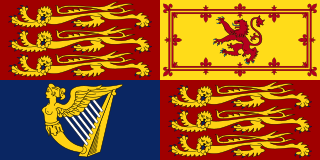
The royal standard of the United Kingdom is the banner of arms of the monarch of the United Kingdom, currently Charles III. It consists of the monarch's coat of arms in flag form, and is made up of four quarters containing the arms of the former kingdoms of England, Ireland, and Scotland. There are two versions of the banner, one used in Scotland in which the Scottish quarters take precedence, and one used elsewhere in which the English quarters take precedence.

Alexander William George Duff, 1st Duke of Fife,, styled Viscount Macduff between 1857 and 1879 and known as the Earl Fife between 1879 and 1889, was a Scottish nobleman and peer who married Princess Louise, the third child and eldest daughter of King Edward VII and Queen Alexandra.

Clarence House is a royal residence on The Mall in the City of Westminster, London. It was built in 1825–1827, adjacent to St James's Palace, for the royal Duke of Clarence, the future King William IV.
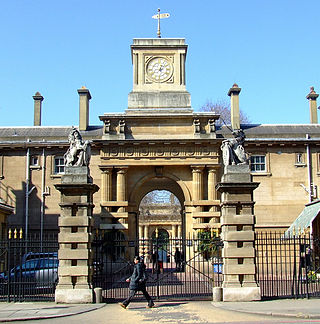
The Royal Mews is a mews, or collection of equestrian stables, of the British royal family. In London these stables and stable-hands' quarters have occupied two main sites in turn, being located at first on the north side of Charing Cross, and then within the grounds of Buckingham Palace.

Kensington Palace is a royal residence situated within Kensington Gardens in the Royal Borough of Kensington and Chelsea in London, England. It has served as a residence for the British royal family since the 17th century and is currently the official London residence of several royals, including the Prince and Princess of Wales, the Duke and Duchess of Gloucester, the Duke and Duchess of Kent, Prince and Princess Michael of Kent, and Princess Eugenie alongside her husband, Jack Brooksbank, and their two sons. The term "Kensington Palace" is often used as a metonym for the offices of the royals who reside there.
The royal standards of Canada are a set of heraldic flags used by members of the Canadian royal family to denote the presence of the bearer within any vehicle, building, or area within Canada or when representing Canada abroad. All are based on a escutcheon of the coat of arms of Canada, the arms of dominion of the Canadian monarch.
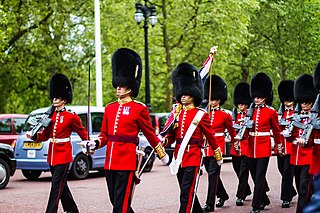
The King's Guard are sentry postings at Buckingham Palace and St James's Palace, organised by the British Army's Household Division. The Household Division also mounts sentry postings at Horse Guards, known as the King's Life Guard.

Half-mast or half-staff refers to a flag flying below the summit of a ship mast, a pole on land, or a pole on a building. In many countries this is seen as a symbol of respect, mourning, distress, or, in some cases, a salute.
The King/Queen's Flag Sergeant is a serving soldier and member of the Master of the Household's Department in the British Royal Household.
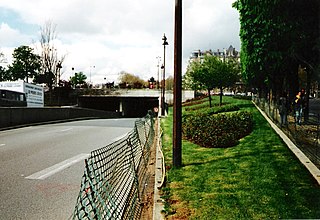
During the early hours of 31 August 1997, Diana, Princess of Wales, died from injuries sustained earlier that night in a car crash in the Pont de l'Alma tunnel in Paris, France. Dodi Fayed and the driver of the Mercedes-Benz W140, Henri Paul, were found dead inside the car. Dodi's bodyguard, Trevor Rees-Jones, was seriously injured but was the only survivor of the crash.

The funeral of Diana, Princess of Wales, started on Saturday 6 September 1997 at 9:08 am in London, when the tenor bell of Westminster Abbey started tolling to signal the departure of the cortège from Kensington Palace. The coffin was carried from the palace on a gun carriage by riders of the King's Troop and escorted by mounted police along Hyde Park to St James's Palace, where Diana's body had remained for five days before being taken to Kensington Palace. The Union Flag on top of the palace was lowered to half mast. The official ceremony was held at Westminster Abbey in London and finished at the resting place in Althorp.
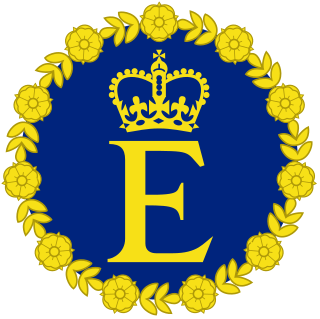
Elizabeth II had a variety of flags to represent her personally and as head of state of several independent nations around the world. They were usually used on any building, ship, car, or aircraft where she was present.

In the United Kingdom, state funerals are usually reserved for monarchs. The most recent was the state funeral of Queen Elizabeth II on 19 September 2022.

On 30 March 2002 at 15:15 GMT, Queen Elizabeth The Queen Mother, widow to King George VI and mother to Queen Elizabeth II, died at the age of 101 at Royal Lodge, Windsor. The death of the Queen Mother set in motion Operation Tay Bridge, a plan detailing procedures including the dissemination of information, national mourning, and her funeral. Representatives of nations and groups around the world sent condolences to the Queen, the British people, and citizens of the Commonwealth. Flowers and messages of condolence were left by the public at royal residences, with members of the royal family publicly paying tribute to the Queen Mother in the days after her death. Her funeral, held on 9 April 2002 at Westminster Abbey in London, attracted 10 million viewers in the United Kingdom and cost £5.4 million.
Operation London Bridge was the funeral plan for Queen Elizabeth II. The plan included the announcement of her death, the period of official mourning, and the details of her state funeral. The plan was created as early as the 1960s and revised many times in the years before her death in September 2022.

On 9 April 2021, Prince Philip, Duke of Edinburgh, the husband of Queen Elizabeth II of the United Kingdom and the other Commonwealth realms, and the longest-serving royal consort in history, died of old age at Windsor Castle at the age of 99.
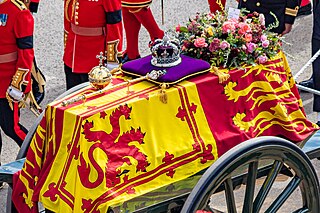
Elizabeth II, Queen of the United Kingdom and the other Commonwealth realms, died on 8 September 2022 at Balmoral Castle in Scotland, at the age of 96. Elizabeth's reign of 70 years and 214 days was the longest of any British monarch. She was immediately succeeded by her eldest son, Charles III.